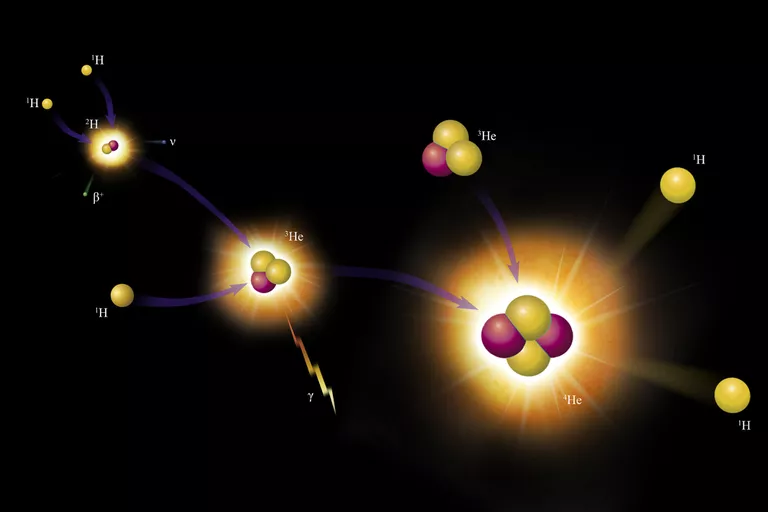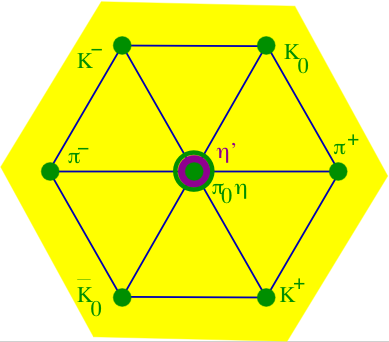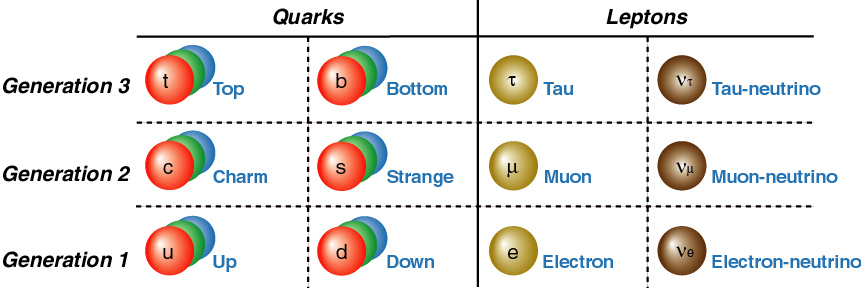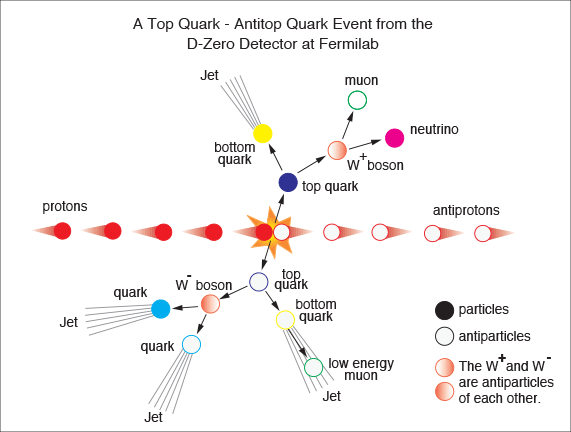Quarks Study Guide
INTRODUCTION
In physics, quarks are a fundamental particles. Hadrons, such as protons and neutrons, are components of the nucleus of atoms. Particle physics is the study of quarks and their interactions with one another via strong forces.
The antiquark is a quark’s antiparticle. Only quarks and antiquarks interact with all four fundamental forces of physics: gravitation, electromagnetism, and strong and weak interactions.
WHAT ARE QUARKS?
- When dealing with nuclear physics, we frequently encounter matter that is made up of protons, neutrons, and electrons.
- Quarks are subatomic particles that make up these particles.
- Quarks have not been directly detected, although experimental confirmation of theoretical predictions based on their existence has been made.
In physics, the quantum numbers of all baryons and mesons are explained using the assumption that baryons are made up of three quarks and that mesons consist of a quark and an antiquark, each resulting in a distinct quantum number.
WHAT ARE QUARKS MADE OF?
- Quarks, as we know them, are elementary particles, meaning they don’t have any constituents.
- Matter is made up of quarks: protons, neutrons, and quarks are the basic components of all matter.
- There are six quarks overall, which are separated into three pairs (or families). They’re up/down, charm/strange, and top/bottom.
QUARKS’ TYPES
- Up, down, top, bottom, weird, and appeal are the six varieties.
Some Important terms of quarks:
- Mass, electric charge, and color are only a few of the characteristics of quarks.
- They might be positive ( ) or negative (). The positive 2/3 charge of up, charm, and top quarks.
QUARKS PARTICLES
- Quarks are elementary particles and fundamental constituents of matter.
- Protons and neutrons, which constitute atomic nuclei, are the most stable quarks, which form hadrons.
- As protons and neutrons comprise atomic nuclei, quarks are believed to be responsible for making up these particles.
QUARKS AND LEPTONS
- Protons and neutrons, for example, are made up of quarks bound together by a strong interaction.
- Strong interactions are avoided by leptons, who only interact through electromagnetic and weak interactions.
- Only in bound states do quarks exist, at least in typical conditions.
QUARK THEORY
- Quarks have mass and have a spin, according to conventional theory (i.e., type of intrinsic angular momentum corresponding to a rotation around an axis through the particle).
- The fundamental nature of quarks appears to be undeniable. They don’t appear to have any structure; they can’t be broken down into smaller pieces.
- Quarks never appear alone, but rather in pairs with other quarks or antiquarks.
QUARK MASSES
- The mass of a quark is described using two terms: current quark mass and constituent quark mass.
- Current quark mass refers to the mass of the quark alone, while constituent quark mass refers to the mass of the gluon particle field surrounding the quark.
- Typically, the values of these masses are extremely disparate.
| Quark | Symbol | Mass |
| Charm | C | 1270 MeV |
| Strange | S | 101 MeV |
| Top | T | 172 GeV |
| Bottom | B | 4.19 GeV(MS) 4.67 GeV(1S) |
UP U 1.7-3.3 MeV
Down D 4.1-5.8 MeV
QUARK CHARGES
- A quark is an energetic particle that moves quickly.
- Quarks come in a number of different types.
- Up quarks and down quarks make up protons and neutrons, respectively.
- 2/3 is the charge of each up quark.
- A -1/3 charge is assigned to each down quark.
| Quark type | baryon number | charge |
| down (d) | 1/3 | −(1/3)e |
| up (u) | 1/3 | (2/3)e |
| strange (s) | 1/3 | −(1/3)e |
| charm (c) | 1/3 | (2/3)e |
Bottom (b) 1/3 -(1/3)e
Top (t) 1/3 (2/3)e
SUMMARY
- All particles that interact with the strong force are classified as quarks.
- They have mass and spin, and they follow Pauli’s principle of exclusion.
- The basic building units of matter are quarks.
- They’re most typically found inside protons and neutrons, the particles that make up each atom’s core.
FAQs
1. What are quarks in simple terms?
Hadrons are a kind of elementary particles that are thought to come in pairs (as in the up and down variants) of similar mass, with one member having a charge of 2/3 and the other a charge of 1/3.
2. Is there anything smaller than a quark?
Quarks are, as far as we know, elementary particles with no structure. This means quarks have no size and are hence point-like, exactly like all other basic particles. Quarks are not bigger or smaller than them in this respect.
3. What are the 6 types of Quarks?
Up, down, charm, strange, top, and bottom were discovered to be the six sorts of quarks.
4. What are quarks made of?
Quarks, as we know them, are elementary particles, meaning they don’t have any constituents. They are the excitation of the quantum field that corresponds to them. The matter is made up of quarks, which are a sort of particles.
We hope you enjoyed studying this lesson and learned something cool about Quarks! Join our Discord community to get any questions you may have answered and to engage with other students just like you! We promise, it makes studying much more fun!😎
REFERENCE
- What is Quark? https://byjus.com/physics/quark/ Accessed 18th April 2022.
- Quarks: http://hyperphysics.phy-astr.gsu.edu/hbase/Particles/quark.html Accessed 18th April 2022.





